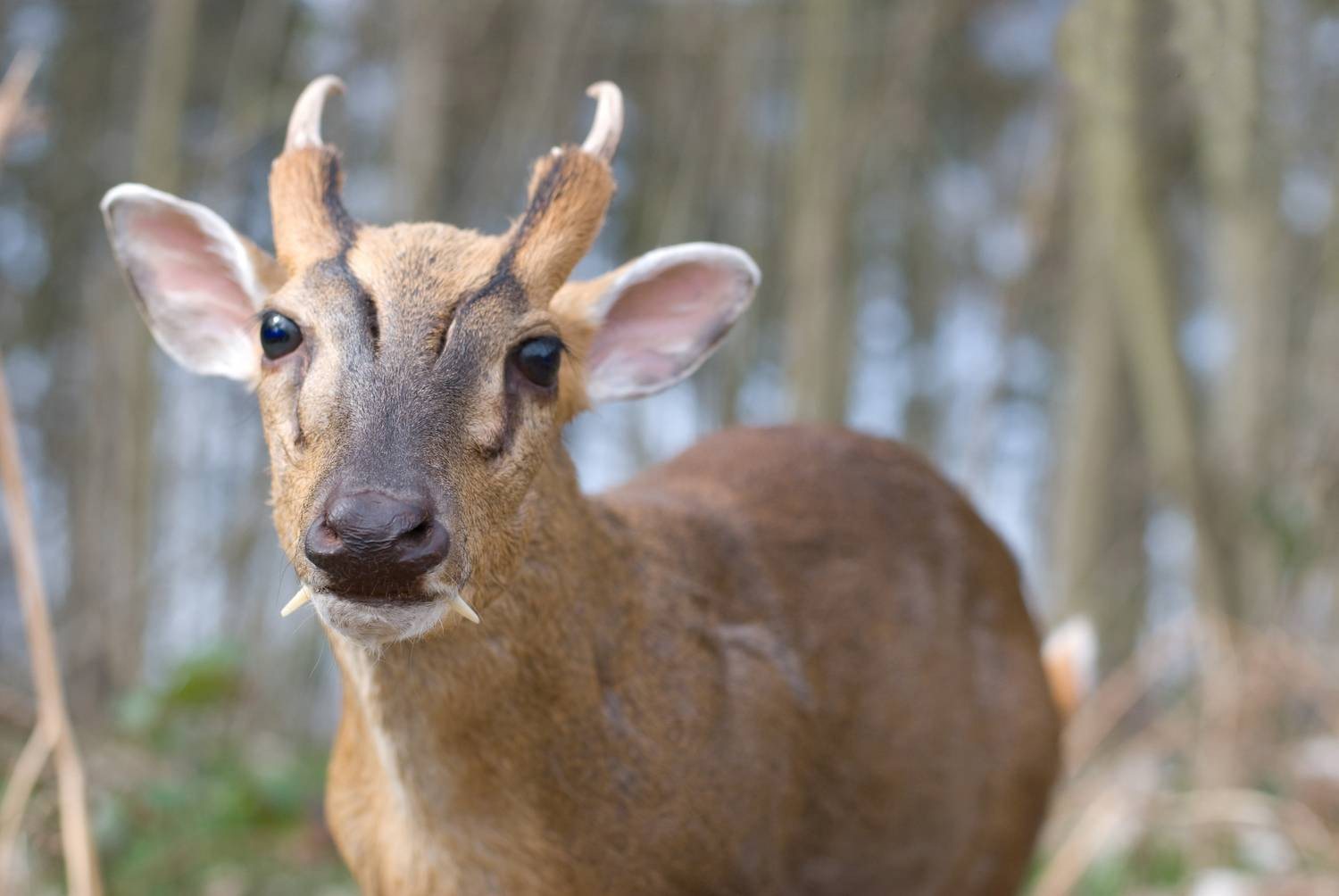
When you think of deer, you might imagine graceful animals quietly roaming forests or grazing in open meadows. But the muntjac deer breaks the mold in a few fascinating ways. Small in size but big in character, these unusual deer are as unique as they are elusive. From their strange vocalizations to their fang-like tusks, let’s take a closer look at the intriguing world of the muntjac.
What Is a Muntjac?
Muntjacs—also known as “barking deer”—are a group of small, primitive deer native to South and Southeast Asia. The most common species is the Indian muntjac (Muntiacus muntjak), although several others exist, including the Reeves’ muntjac (Muntiacus reevesi), which has become an invasive species in parts of the UK and Europe.
Muntjacs are among the smallest deer in the world. Most stand only about 1.5 to 2 feet (50–60 cm) at the shoulder and weigh around 30–40 pounds (13–18 kg). But despite their small stature, they pack some wild surprises.
Why Are They Called “Barking” Deer?
Muntjacs make a loud, harsh barking sound—something like a dog’s bark—which is used as an alarm call when they sense danger. This distinctive call can last for several minutes and is often heard echoing through dense forests, especially at dawn or dusk.
These barks can confuse predators—and even people—into thinking a dog is nearby. It’s one of the many traits that make the muntjac stand out in the deer family.
Ancient Origins and Unique Traits
Muntjacs are considered one of the most primitive deer species, having evolved over 15 million years ago. They still retain features that have disappeared in more modern deer, like upper canine tusks in males. That’s right—muntjac bucks don’t rely only on antlers for sparring; they also have fang-like teeth that give them a bit of a vampire vibe!
Other interesting traits:
- Males grow small, unbranched antlers that they shed and regrow each year.
- Solitary behavior: Unlike many deer, muntjacs are typically loners except during mating season.
- Year-round breeding: Muntjacs don’t have a specific breeding season, meaning they can reproduce throughout the year.
From Asia to Your Backyard?
While native to Asia, the Reeves’ muntjac was introduced to the UK in the early 20th century—originally in parks and private estates. Some escaped and quickly established a wild population. Today, these small deer are spreading across England and Wales and are considered invasive because of their impact on woodland ecosystems.
Conservation Status
Most muntjac species are doing relatively well, though some lesser-known species are endangered due to habitat loss and hunting. Conservation efforts are underway to better understand and protect the rarer species like the Giant Muntjac and Leaf Muntjac, which live in isolated forest areas and are rarely seen.
Why People Find Them Fascinating
- Tiny and tough: They may be small, but muntjacs are hardy survivors.
- Unusual sounds: Their barking is eerie and unexpected from a deer.
- Ancient lineage: These animals are living fossils of the deer world.
- Unique look: With tusks, tiny antlers, and expressive faces, they’ve become a favorite among wildlife watchers and photographers.
Final Thoughts
The muntjac deer is a remarkable blend of ancient biology and modern mystery. Whether hiding in Asian jungles or tiptoeing through English hedgerows, these little deer are full of surprises. They might not have the majesty of a stag or the fame of a white-tailed deer, but the muntjac proves that sometimes the most interesting creatures come in the smallest packages.
Fun Fact: The leaf muntjac (Muntiacus putaoensis), discovered in the 1990s in Myanmar, is so small that fawns can almost fit in the palm of your hand!
More photos below ↓














Disclaimer: This blog post is for edutainment purposes only and may not be entirely accurate.






